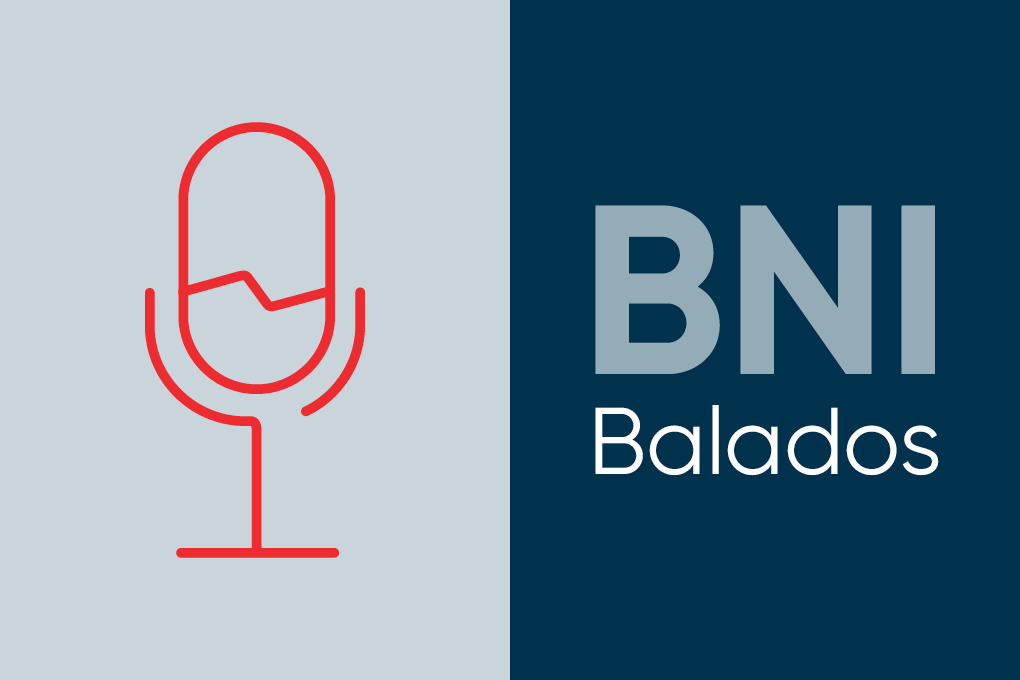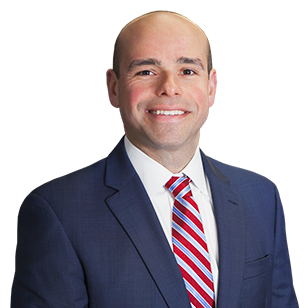Terry Dimock
Bienvenue à NBI Quick Takes. Mon nom est Terry Dimock, gestionnaire de portefeuille principal, Banque Nationale Investissements. Je serai votre hôte pour une série en trois parties axée sur les actifs réels.
Tout d'abord, un avertissement. BNY Mellon Asset Management Canada Ltd. est le gestionnaire de portefeuille de la Stratégie mondiale de revenu d'actifs réels BNI et sa société affiliée, Mellon Investment Corporation, est le sous-conseiller. Aujourd'hui, nous sommes rejoints par les gérants de portefeuille Mellon, Jim Lydotes et Brock Campbell, pour discuter des actifs réels. Cette discussion n'est fournie qu'à titre d'information générale et ne doit pas être considérée comme un conseil ou une recommandation d'achat de titres individuels.
Je suis de nouveau accompagné de Jim Lydotes, gestionnaire principal, de la stratégie mondiale de revenu des actifs réels chez Mellon pour Banque Nationale Investissements. Bienvenue, Jim.
Jim Lydotes
Merci, Terry. Merci de m'avoir invité.
Terry Dimock
Dans les deux premiers podcasts, nous avons parlé de deux secteurs différents, mais commençons peut-être par ce dont nous avons besoin en tant qu'équipe et pourquoi la gestion active est vraiment importante dans les actifs réels. De quel type d'effectif avez-vous besoin, de panels, d'expérience pour être vraiment en mesure de suivre les thèmes de ces industries et les organismes de réglementation et d'être en mesure de prendre de bonnes décisions ?
Jim Lydotes
Eh bien, beaucoup, je vous dirais. Si vous pensez aux actifs réels ou aux actifs d'infrastructure, la plupart d'entre eux sont d'excellentes entreprises. Ce sont des monopoles naturels, ils génèrent beaucoup d'argent, ce sont vraiment des marchés finaux défensifs, certaines des entreprises de la plus haute qualité au monde. Mais pour qu'une grande entreprise soit un excellent investissement, vous devez faire attention à ce que vous payez, et souvent, sur les marchés boursiers, il peut y avoir une perturbation du marché. Et je pense que les gestionnaires d'actions actifs sont les seuls à pouvoir arbitrer ces perturbations et à en tirer parti là où il y a des opportunités.
La gestion active est vraiment essentielle pour s'aligner étroitement sur les équipes de direction des entreprises et sur les régulateurs dans le domaine des infrastructures. La prévisibilité réglementaire est une grande partie de ce sur quoi nous nous concentrons et s'asseoir avec les organismes de réglementation, comprendre ces structures réglementaires, c'est essentiel et vous ne pouvez le faire qu'avec des gens. En plus de la gestion de la stratégie par Brock et moi-même, nous avons une équipe de 30 spécialistes sectoriels de l'industrie en carrière, des analystes de recherche, que nous pouvons mettre à profit au sein de la société. C'est vraiment important pour pouvoir se rapprocher de ces organismes de réglementation, de ces entreprises et de comprendre toutes les nuances.
Si vous pensez à notre ensemble d'opportunités et à notre fonds, en général, entre 30 et 40 % de la stratégie est investie dans le secteur des services publics. Et si vous pensez à une grande partie des changements qui se produisent dans le secteur des services publics autour de la mise en ligne de plus en plus d'énergie renouvelable, il y a aussi des perturbations autour du carbone.
Aux États-Unis aujourd'hui, on pense qu'une taxe sur le carbone arrivera sur le marché aux États-Unis, elle a déjà été mise en place dans d'autres parties du monde. C'est un concept qui circule depuis un certain temps. Mais qu'est-ce que cela signifie réellement ? Nous avons des données carbone de niveau sécurité que nous avons pu exploiter. Nous avons été en mesure de calculer un passif non capitalisé réel lié à chacun de nos ensembles d'opportunités de services publics réglementés aux États-Unis, et nous pouvons ensuite réévaluer ce que cela signifie pour la valeur de ces activités.
Il ne s'agit pas d'un exercice conceptuel ; C'est là que nous pouvons réellement mettre la plume sur papier, en exploitant les données disponibles auprès de nos analystes de recherche fondamentale, notre point de vue fondamental pour essayer de déterminer l'impact sur ces entreprises et nous aider à déterminer ce que nous devrions payer pour les actifs que nous investissons dans la stratégie.
Je crois qu'il s'agit d'une utilisation vraiment avant-gardiste de ce type de données et de son intégration dans notre processus – encore une fois, je ne sais pas comment vous pouvez le faire à moins d'avoir cet effort de recherche approfondi comme nous le faisons, le département central de recherche de 30 personnes ainsi qu'une compréhension fine de la façon dont vous pouvez exploiter les données disponibles pour mieux comprendre ce que nous sommes prêts à payer pour nos entreprises. Je pense que ce n'est qu'en étant un gestionnaire actif que l'on peut obtenir ce niveau de nuance dans l'évaluation de ces opportunités.
Terry Dimock
Le monde change rapidement, les technologies changent, les environnements changeants et vous avez certainement besoin de personnes qui examinent en profondeur toutes ces questions pour s'assurer qu'elles sont prises en compte lorsque vous investissez, donc très intéressant.
Examinons une autre partie importante des actifs réels, à savoir le transport. Commençons par l'essentiel : comment les entreprises de transport réalisent-elles des bénéfices ?
Jim Lydotes
Ainsi, les sociétés de transport possèdent des actifs – pensez aux ports, aux aéroports, aux routes à péage – et elles sont en mesure de facturer des frais pour l'utilisation de ces actifs. Les frais qu'ils peuvent facturer sont généralement fixés par les organismes de réglementation. Nous parlons beaucoup de prévisibilité réglementaire, de rencontres avec les organismes de réglementation – il s'agit d'un secteur fortement réglementé.
Compte tenu de ce que font ces organismes de réglementation, ils tiennent compte des hypothèses de volume, ils font une hypothèse sur ce que sera le volume en fonction de cet actif. Qu'il s'agisse d'une route à péage ou d'un aéroport, quels seront les volumes. Et ils essaient d'arriver à ce qui est un rendement économique raisonnable pour l'entreprise qui a dépensé tout cet argent pour mettre cet actif en place. Vous construisez une route à péage, dépensez beaucoup d'argent pour construire une route à péage, il y a un bénéfice économique raisonnable que vous devriez attendre. Et ces régulateurs tiennent compte du volume dans le rendement économique lorsqu'ils déterminent les frais à facturer sur cette route à péage.
Dans le cas d'un aéroport, chaque fois que vous atterrissez dans un aéroport, une partie de votre billet sert à payer au propriétaire de l'aéroport ce qu'on appelle des frais d'atterrissage, c'est-à-dire des frais d'atterrissage fixes. De cette façon, les propriétaires d'aéroports sont moins sensibles au prix du billet – vous et moi sommes peut-être plus sensibles au prix – mais les propriétaires d'aéroports, moins, parce qu'ils sont plus préoccupés par le simple fait d'obtenir ce flux constant de volume transitant par l'aéroport.
Les routes à péage fonctionnent à peu près de la même manière. Un organisme de réglementation détermine les frais par véhicule qu'ils peuvent facturer et les revenus totaux qu'ils reçoivent fluctueront en fonction du volume parcouru sur cette route à péage.
Terry Dimock
Nous avons maintenant parlé de l'importance de faire appel à des analystes pour approfondir toutes ces informations, alors comment analysez-vous un accord de concession, en examinant les conditions et à la fois la durée et les tarifs ?
Jim Lydotes
Comprendre le contexte réglementaire est essentiel pour comprendre les perspectives de l'entreprise. S'il s'agit d'industries fortement réglementées et qu'elles doivent faire l'objet d'examens réglementaires périodiques, de réunions avec les organismes de réglementation, de cette partie de notre analyse, c'est une grande partie de notre diligence raisonnable.
Une autre partie de l'analyse sur laquelle nous nous concentrons concerne les attentes en matière de volume pour les actifs. Comme la plupart de ces entreprises sont sensibles au volume, nous devons être convaincus que le volume passant par ces actifs sera suffisant pour leur permettre d'obtenir un rendement autorisé que nous jugeons raisonnable. La recherche ici peut souvent impliquer des réunions avec les équipes de direction des compagnies aériennes pour mieux comprendre comment elles perçoivent les volumes passant par différents aéroports, à mesure qu'ils modifient les habitudes de vol, quels aéroports privilégient-ils ou défavorisent-ils ? C'est vraiment essentiel pour comprendre ce que seront ces modèles de volume.
L'ancienneté ou la durée de ces contrats est également importante. Si un accord de concession équitable est mis en place, en général, la façon dont nous l'envisageons est la suivante : plus c'est long, mieux c'est. Plus il est long, plus il est visible. Cela offre plus de visibilité sur les revenus que nous pouvons nous attendre à recevoir de cet actif.
Et une dernière considération dans notre analyse est de savoir quelles opportunités ont-ils de reconnaître d'autres formes de revenus. Ce que nous voulons dire, c'est qu'il y a souvent un aéroport ou même une route à péage qui aura une opportunité de vente au détail sous-utilisée. Dans la mesure où cela pourrait être monétisé, et nous avons tous été dans un aéroport et avons dépensé beaucoup trop d'argent pour une bouteille d'eau et généralement la moitié des revenus que vous avez dépensés pour cette bouteille d'eau va directement au propriétaire de l'aéroport. Cela peut donc offrir un avantage considérable à une entreprise si elle a sous-utilisé une opportunité de vente au détail dans le passé et qu'elle est en train de la monétiser. C'est l'autre considération dont nous tenons compte.
Terry Dimock
Aujourd'hui, nous sommes encore au milieu ou peut-être aux derniers stades d'une pandémie et nous avons tous eu la même surprise en février et mars et avec la fermeture des économies, mais alors que nous nous tournons vers l'avenir, alors que vous investissez aujourd'hui, quel est selon vous l'état de l'industrie après la COVID-19 ? Qu'est-ce qui sera le même, qu'est-ce qui sera différent, comment voyez-vous cela évoluer et comment cela influe-t-il sur la façon dont vous investissez ?
Jim Lydotes
Il y a beaucoup de nuances dans le transport, surtout maintenant, après la COVID. Et je pense qu'il faut séparer les routes à péage des aéroports, et même à l'intérieur des aéroports, je pense qu'il faut faire une distinction encore plus grande entre les voyages d'affaires et les voyages de loisirs à l'intérieur des aéroports. Nous nous attendons généralement à ce que le trafic à péage revienne aux niveaux antérieurs d'avant la COVID, d'ici le début de 2021. Certains endroits ont déjà connu des rendements proches de ces niveaux. En fait, à certains endroits, vous assistez à une accélération où le trafic à péage est en fait supérieur à ce qu'il était avant COVID. La saison des voyages en Europe touche à sa fin. Le trafic à péage est arrivé, je dirais plus fort que la plupart des gens ne l'auraient prévu si nous avions eu cette conversation au printemps.
Voyages d'affaires au sein des aéroports... Pour être juste, il est probable que cela reviendra beaucoup plus lentement, à la fois en raison des pressions économiques, mais aussi parce que je pense que les entreprises ont probablement réalisé qu'une grande partie des voyages effectués dans le passé n'est peut-être pas nécessaire, du moins à court terme. Je pense que nous avons assisté à un changement un peu permanent de la demande là-bas. Mais du côté des loisirs, nous nous attendons à ce que cela revienne dès que nous aurons un vaccin ou tout type de test avancé. Je ne crois pas que nous allons voir des changements à long terme dans la demande des voyages de loisirs.
Terry Dimock
Les bilans sont également importants, et nous avons certainement vu l'impact de la COVID sur les personnes ayant besoin de capitaux. Quel type de fouille vos analystes ont-ils fait sur les bilans pour s'assurer qu'ils peuvent le voir pendant la COVID et être là de l'autre côté pour pouvoir reprendre leurs activités ?
Jim Lydotes
L'évaluation des bilans de ces entreprises est l'un des points critiques de la recherche que nous menons toujours. Et je dirais qu'au début de la crise de la COVID, une grande partie de la volatilité que vous avez observée dans l'espace qui, à mon avis, a créé pas mal d'opportunités, était liée à la solidité du bilan. Le marché se demandait combien de temps ces entreprises allaient pouvoir exploiter et gérer leur trésorerie sans trafic passant par les aéroports et sans trafic passant par les routes à péage. Je pense que cela a causé beaucoup de perturbations sur le marché des actions, et cela a créé pas mal d'occasions, donc, je dirais que la compréhension de la solidité du bilan et des clauses restrictives et de la consommation de flux de trésorerie sur les faibles niveaux d'activité est l'un des points critiques de la recherche sur lesquels nos analystes des transports se concentrent toujours.
Terry Dimock
Merci beaucoup, Jim. Comme toujours, vos paroles sont éclairantes et pertinentes. Merci d'avoir participé avec nous aujourd'hui. Pour les auditeurs, je pense que nous avons fait le tour de ces divers thèmes au cours des derniers épisodes pour vraiment parler de la complexité des actifs réels, parler des services publics, de l'infrastructure de télécommunications, du transport et de la façon dont ces actifs peuvent faire partie d'un portefeuille et qu'ils ont de solides flux de trésorerie prévisibles qui produisent des rendements solides au fil du temps.
Aussi, je pense que vous seriez en mesure d'apprécier le niveau d'analyse, le type d'équipe qui examine ces actifs pour vraiment choisir entre un bon et un mauvais investissement. J'espère que cela vous a été utile et je vous remercie de votre écoute et vous souhaite une très belle journée.


 Terry Dimock
Terry Dimock

 James A. Lydotes
James A. Lydotes

